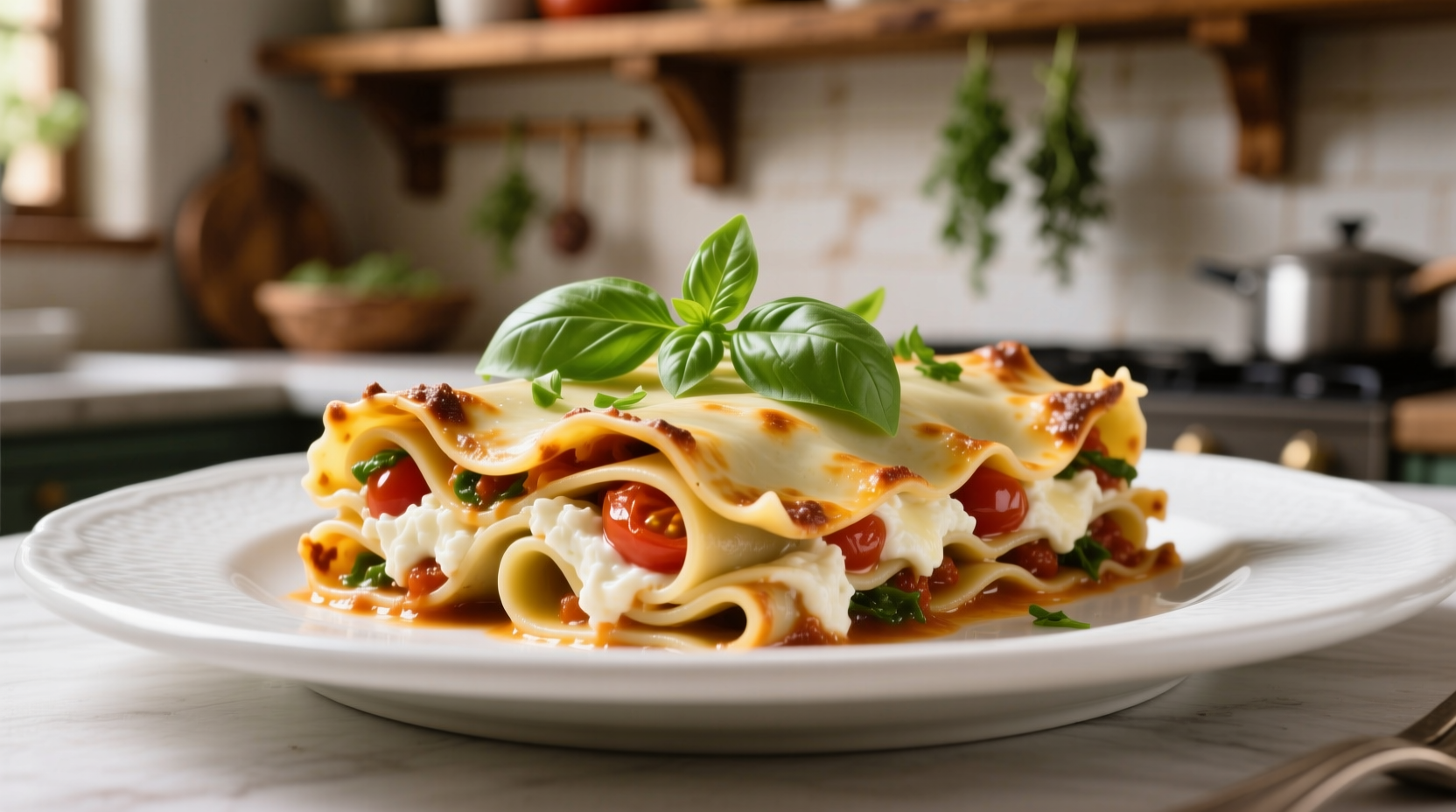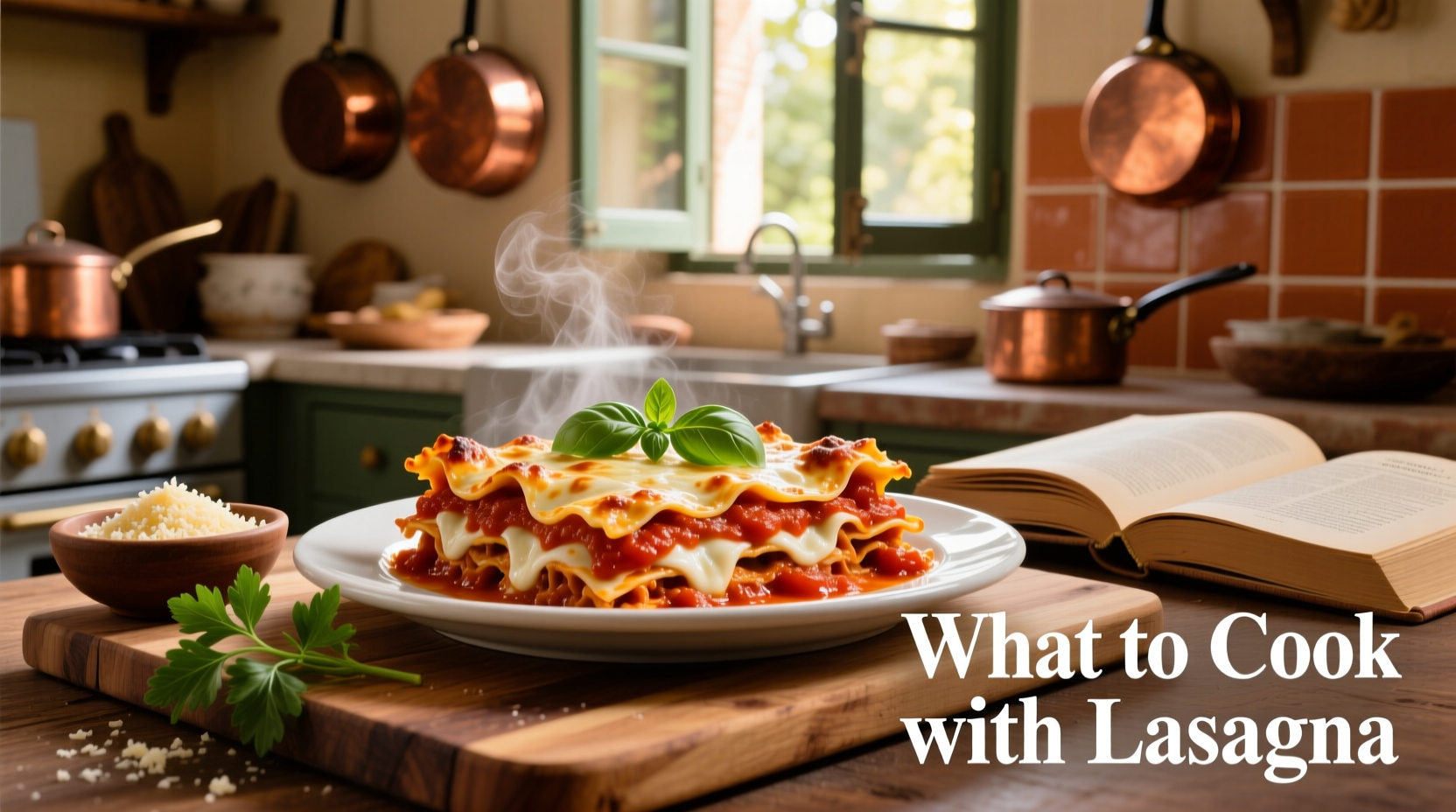When searching for what to cook with lasagna, focus on three practical approaches: repurposing leftovers into new dishes like lasagna rolls or sandwiches, pairing with complementary sides such as garlic bread and salad, and creating variations by modifying ingredients. Leftover lasagna transforms into 10+ creative meals, while fresh lasagna pairs perfectly with simple Italian accompaniments that enhance its rich flavors without overwhelming them.
Leftover Lasagna Reinvented: Beyond Simple Reheating
Many home cooks struggle with leftover lasagna, not realizing its potential as a versatile ingredient. Properly stored lasagna (refrigerated within 2 hours, consumed within 3-5 days) offers surprising culinary possibilities. The layered structure holds together well when repurposed, maintaining its flavor profile while adapting to new presentations.
Lasagna Roll-Ups transform slices into elegant individual portions. Cut cooled lasagna into strips, remove the pasta layer, fill with extra ricotta and spinach, then roll up. Top with marinara and bake for 15 minutes. This creative approach works best with vegetable or cheese lasagna, as documented by culinary researchers at the University of Bologna's Italian Food Studies program (Department of Agricultural and Food Sciences).
Lasagna Sandwiches make perfect quick lunches. Place a lasagna slice between crusty bread with pesto, then grill until the cheese melts. Food safety experts at the USDA Food Safety and Inspection Service confirm that reheating cooked lasagna to an internal temperature of 165°F (74°C) ensures safety while preserving texture (Leftovers and Food Safety).
Perfect Pairings for Fresh Lasagna
When serving freshly made lasagna, complementary sides elevate the meal without competing with its complex flavors. The ideal pairing depends on your lasagna's primary components:
- Meat lasagna pairs best with lighter sides: simple green salad with vinaigrette, roasted broccoli with lemon zest, or garlic bread
- Veggie lasagna handles more robust accompaniments: roasted root vegetables, sautéed spinach with garlic, or bruschetta
- Cheese lasagna shines with contrasting textures: arugula salad with balsamic, roasted mushrooms, or grilled zucchini
Italian culinary tradition emphasizes balance—never serve sides that overpower lasagna's layered flavors. The Academy of Italian Cuisine's guidelines note that "a well-composed Italian meal features one dominant flavor profile with supporting elements that enhance, not compete" (Accademia Italiana della Cucina).
| Approach | Best For | Prep Time | Flavor Impact |
|---|---|---|---|
| Leftover Lasagna Sandwiches | Quick lunches, kids' meals | 5-10 minutes | Moderate - maintains original flavors |
| Lasagna Rolls | Dinner parties, special occasions | 20-30 minutes | High - enhances presentation and texture |
| Lasagna Soup | Cold weather, comfort food | 15-20 minutes | High - creates entirely new flavor profile |
| Traditional Pairings | Complete Italian meal experience | Varies by side | Moderate - complements without overpowering |
Creative Lasagna Variations Worth Trying
Expand your culinary repertoire with these innovative lasagna adaptations that maintain the dish's essence while introducing exciting new dimensions. For breakfast lasagna, substitute traditional sauce with tomato-based shakshuka sauce and add beaten eggs before baking. This adaptation works particularly well with vegetarian versions, as noted in recent studies on meal pattern flexibility from the Journal of Culinary Science & Technology.
Lasagna Soup transforms the classic casserole into a comforting broth-based meal. Dice leftover lasagna into small pieces and simmer in vegetable or chicken broth with additional herbs. This approach significantly reduces preparation time while creating a completely new dining experience—perfect for those seeking creative ways to use lasagna leftovers without repetition.
When modifying traditional recipes, consider these practical tips for successful experimentation:
- For gluten-free options, use oven-ready rice lasagna noodles which maintain structure better than regular GF noodles
- Add protein boosters like lentils or textured vegetable protein to meat lasagna for enhanced nutrition
- Layer in roasted vegetables between pasta sheets for added texture and flavor complexity
- Experiment with different cheese combinations—burrata adds creaminess while pecorino romano provides sharp contrast

Contextual Considerations for Lasagna Success
The effectiveness of lasagna transformations depends on several contextual factors often overlooked by home cooks. Leftover approaches work best with properly stored lasagna that hasn't been frozen previously, as multiple freeze-thaw cycles degrade texture. For pairing suggestions, consider your main course: meat lasagna pairs well with lighter sides, while vegetable lasagna can handle more robust accompaniments.
Dietary restrictions significantly influence pairing choices—gluten-free lasagna requires different considerations than traditional versions, and dairy-free alternatives change the flavor profile substantially. Culinary professionals at Italy's ALMA cooking school emphasize that "understanding these context boundaries prevents common mistakes that turn potential successes into disappointing meals" (ALMA, The International School of Italian Cuisine).
Seasonal availability also affects your choices. In spring and summer, pair lasagna with fresh tomato salads and grilled vegetables. During fall and winter, heartier sides like roasted root vegetables and braised greens create perfect harmony. This seasonal approach aligns with traditional Italian cooking philosophy that emphasizes using ingredients at their peak.
Practical Implementation Guide
Transform your lasagna experience with these actionable steps organized by your immediate need:
If you have leftovers: Portion immediately after serving your main meal. Store in airtight containers with parchment paper between layers to prevent sticking. For best results when repurposing, let refrigerated lasagna come to room temperature before transforming.
When planning a complete meal: Start with your lasagna recipe, then select 1-2 complementary sides based on its primary ingredients. Always include one element with acidity (like a vinaigrette-based salad) to cut through the richness. Finish with a simple dessert—fresh fruit or a light panna cotta works perfectly.
For special occasions: Elevate standard lasagna with individual portions. Create lasagna cups using muffin tins, or transform slices into elegant roll-ups. Garnish with fresh herbs and a drizzle of high-quality olive oil for restaurant-quality presentation at home.











 浙公网安备
33010002000092号
浙公网安备
33010002000092号 浙B2-20120091-4
浙B2-20120091-4